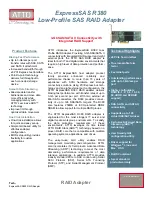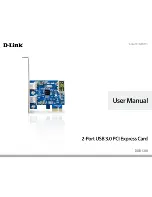
NOTE:
Refer to the Windows SBS 2003 R2 documentation for help on
planning the installation.
12.
Click
Next
on the
Welcome to the Microsoft Windows SBS 2003 R2 Setup Wizard
window. The
Suite Requirements window displays if your system meets all the requirements to install Windows
SBS 2003 R2.
13.
If the system meets all the requirements to install Windows SBS 2003 R2, the Suite Requirements
window displays. Click
Next
, and the License Agreement displays.
However, if the system does not meet all the requirements, click
Cancel
to exit this portion of setup.
Take corrective action by adding required hardware and/or reconfigure your base OS. To take
corrective action, connect necessary components or make modifications, select Back, and select
Next
to re-evaluate system.
14.
Review the License Agreement. If you agree, select the
I agree
radio button and click
Next
.
15.
Verify the Name, Organization, and Computer Name on the
Product Identification
window. Then
enter the 25-digit key for your Microsoft Windows Small Business Server R2 CD-ROM and your
Microsoft Outlook CD-ROM. Click
Next
.
The
Automatic Logon Information
window prompts you for your password if you would like Setup
to log you on automatically after the system restarts.
16.
Select your preference and click
Next.
17.
Fill out your address information on the
Company Information
window and click
Next
.
18.
Fill out your telephone information on the
Telephony Information
window and click
Next
.
NOTE:
Enter this information even if you do not have a modem
installed.
19.
On the
Server Network Card Configuration
window, verify/enter your IP Address, Subnet Mask,
and Default Gateway; and click
Next
.
20.
In the
New Domain Information
window, enter your Full DNS name for new domain and Domain
NetBIOS name; and click
Next
.
21.
On the
Data Folders
windows, select folders in which to store data for each component, and click
Next
. The Windows Server 2003 configuration folder choices include:
•
Networking configuration
•
Domain configuration
•
Terminal services
•
Network identification
Setup starts to copy files, automatically configures your Active Directory, and restarts the server.
22.
On the
Component Selection
window, select and modify components to fit your custom solution,
and click
Next
.
23.
If installing Windows SBS 2003 R2 Premium Edition, choose whether you want to enable caching
on the
ISA Server Cache Drives
window and click
Next
.
24.
Select IP address ranges to load into the Local Address Table on the
ISA Server Construct Local
Address Table
window and click Next.
11

































